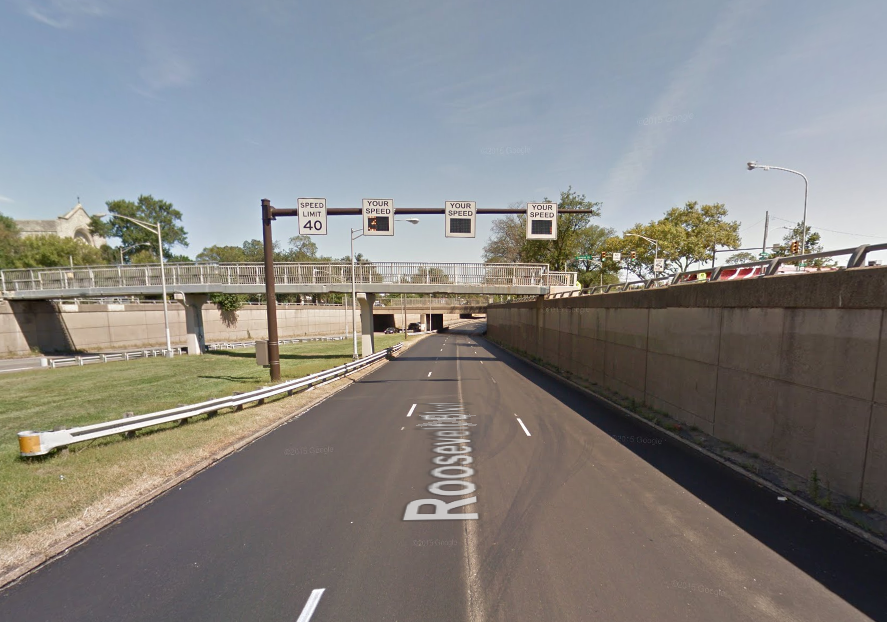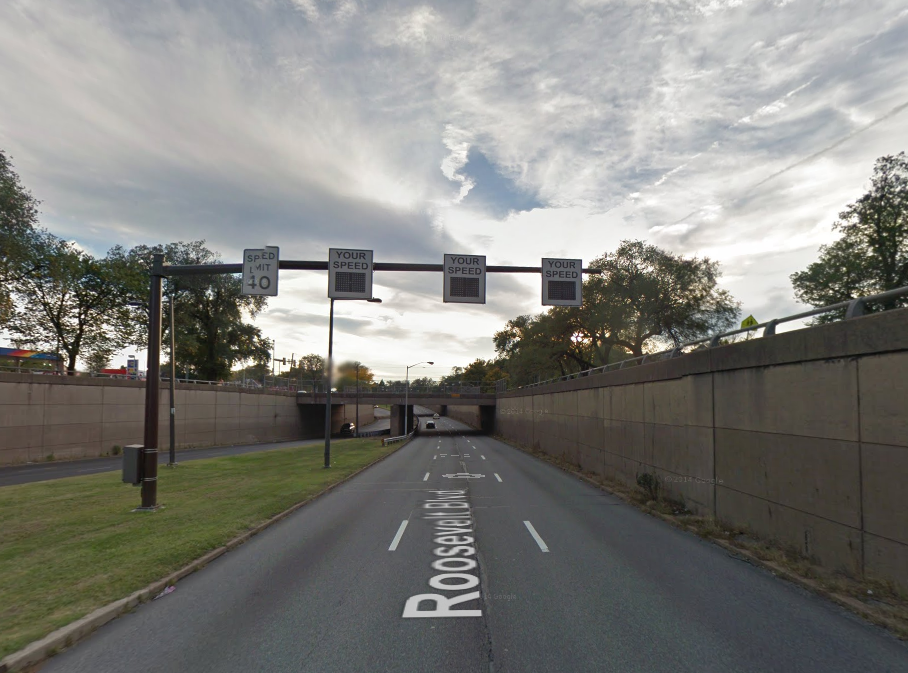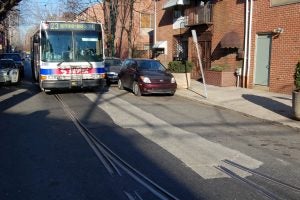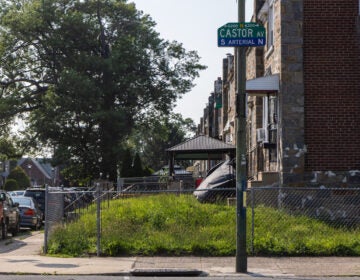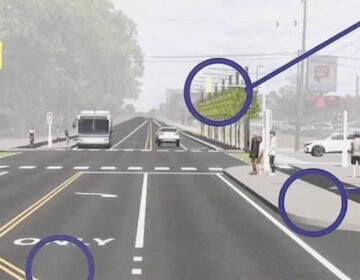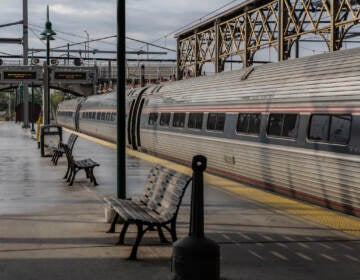Streetsplainer: Do radar speed signs ever really slow drivers down?

Welcome to Streetsplainers, an occasional series of answers to those often overlooked questions about our beleaguered/beloved transportation systems: Just what the heck is that thing in the road? Why on Earth would SEPTA do that? How does that weird doohickey work? E-mail Jim your questions, and he’ll chase down the answers, hopefully in a reliably on-time fashion.
This Streetsplainer comes to us all the way from Nashville, Tennessee! Reader JJ Anthony asks: “Do the speed readers really get people to slow down? Or is it simply a tap on the brakes and back to speeding?”
You’ve seen them on trailers next to construction zones on the highway, permanently affixed to traffic poles near schools, and perhaps on the street next to the office.
Radar speed signs are a fairly common sight on Pennsylvania’s highways and byways. Their purpose goes without saying: Hey buddy, slow down, will ya?
But do they work? Do drivers really slow down when they see them? Or, like so many a NPR pledge drive, are radar speed signs ignored by most? How the heck do officials decide to place them, anyway?
SLOW DOWN THERE, SPEED RACER!
A few traffic studies have examined the immediate and ongoing effects of radar speed signs on motorist speed. Generally, a radar speed sign will slow traffic down somewhere from 1 mph to 11 mph compared to conditions before the sign. Fast moving highways seem to see larger speed reductions than easy-going side streets, which makes intuitive sense: the same light tap of the brakes to slow you from 70 mph to 60 mph on the Blue Route produces a far more modest speed reduction when you’re going 27 mph on Pine Street.
Some studies have shown ongoing speed reductions even after radar signs were removed. In Riverside, California, researchers observed a 6.1 mph reduction at the radar speed sign trailer and a 2.9 mph speed reduction down the street past the trailer. Then, one week after the speed trailer was removed, there was still a 0.6 mph reduction at the trailer and 1.7 mph reduction downstream. Another study in Minnesota found slower traffic a full year after the temporary speed feedback signs.
But that just might be ”Minnesota nice” at work, don’t cha know? Another study found that average speeds on Pennsylvania highways increased between 3 and 9 mph the week after radar speed signs were removed.
I wasn’t able to find a study of how New Jersey drivers reacted to radar speed signs, presumably because they murdered the poor researchers that tried.
As you would expect, not every motorist slows down because some sign tells him to. One South Dakota study showed 74 percent of motorists sped before a speed feedback sign was deployed. Afterwards, the number of speeding motorists fell about 20 percent, enough for a 4 – 5 mph drop in average speeds.
In Philadelphia, evidence of their effectiveness is assumed. The radar speed signs record the speeds of cars as they pass by, says Rich Montanez, the Streets Department chief traffic and lighting engineer. Because the radars are fixed on a single spot, you only get one velocity data point per car. But if one car passes by going 60 mph in a 40 mph zone, “and then the second and third car slow down to the limit, we assume that it’s working.”
So while Streets can’t say for certain that a radar speed sign worked on any specific driver, they can say the signs are “slowing down traffic in general.”
The signs work without enforcement – some studies have shown an even greater impact when the radar feedback signs also photograph and ticket speciously egregious speeders.
But in Pennsylvania, it’s unlawful to issue tickets using automated radar and camera systems. Philadelphia Police Commissioner Charles Ramsey has lobbied to change that law. And under Commonwealth law, only the state police can use radar guns to issue tickets; not even local cops can, making Pennsylvania the only state in the U.S. with such a prohibition.
LIVE FAST, DIE YOUNG
Generally, these get placed in two spots, according to the Western Transportation Institute study: “school zones and work zones.” But there’s little in the way of best practices or standard usage for speed feedback signs, which was actually the raison d’etre of the WTI report.
Society’s elevated safety concerns for all things related to children explains why speed signs are so common in school zones. We’ve been conditioned by evolution to find children adorable and worthy of our protection. That hardwiring doesn’t necessarily extend to radar speed signs, of course; we just tend to put them in places with heightened safety concerns.
Places like Roosevelt Boulevard, the twelve-lane, 300-foot-wide highway rushing across much of Northeast Philadelphia. Not unlike the Battle of San Juan Hill that made its namesake famous, Roosevelt Boulevard is terribly bloody—a stretch of road where the surfeit of wide lanes entices reckless youth to race and the rest of us to merely speed mindlessly. Too often, the results are horrific.
The Boulevard’s speeding problem led the Philadelphia Streets Department to place a few permanent radar speed signs there, one for each lane mounted shortly before the Oxford Circle overpass, said Montanez.
The Streets Department also deploys nine portable radar speed signs. “We place them all over the city—it’s part of our Slow Down campaign—just to give motorists an idea of how fast they are going through residential streets.”
Streets uses accident data and resident complaints to place the speed feedback trailers.
Montanez said that Philadelphia is somewhat odd in that the city’s Streets Department—not traffic cops—place them. “In townships,” he said, “they’ll say the police department” places them.
But that’s not always the case. Harrisburg’s police department doesn’t use them, and neither do the State Police. Plenty of traffic engineers and highway planners I asked assumed PennDOT deployed them, but the department doesn’t – at least not directly.
In its Official Traffic Control Devices guide, PennDOT does mandate that construction contractors use speed display signs whenever an interstate project costs over $300,000. If the contractors feel so inclined, the signs can also flash “appropriate messages such as ‘YOU ARE SPEEDING’ or ‘SLOW DOWN’”.
For the most part, the radar signs are owned by road crews and equipment rental companies, says Gary Laudenslager, the customer service manager for Solar Tech, Inc., the Allentown-based manufacturer of solar powered message boards, blinking arrows and speed signs.
Laudenslager said Solar Tech’s signs, in addition to being environmentally friendly, have another nice feature: the “overspeed” setting, which, instead of showing a speeding driver his actual velocity, will just throw up some blanks “to defer people from going by and trying to see how fast they can go.”
WHYY is your source for fact-based, in-depth journalism and information. As a nonprofit organization, we rely on financial support from readers like you. Please give today.



